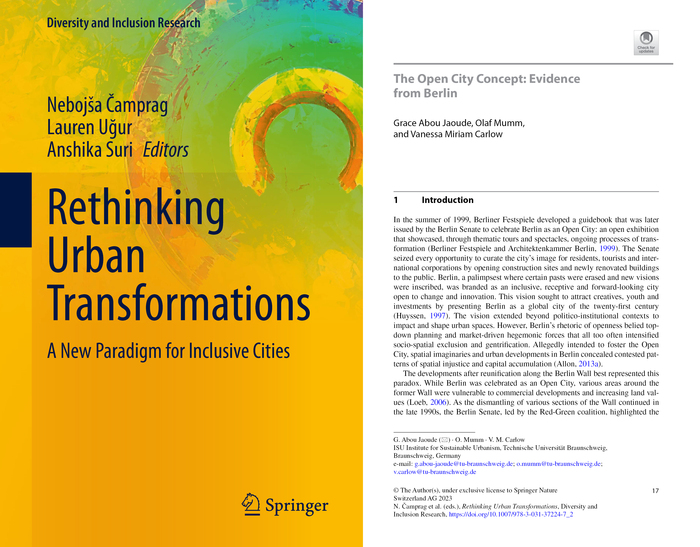Book Chapter: The Open City Concept
Evidence from Berlin
by Grace Abou Jaoude, Olaf Mumm, and Vanessa Miriam Carlow
For decades, cities have witnessed conflicting and complementary tendencies of exclusion and inclusion, tolerance and ignorance, as well as collectiveness and personal fulfilment. Against these realities, the Open City emerged as a potential guiding premise that extended beyond the contradictions of the urban to create spaces of encounter, inclusion and diversity. To achieve a better understanding of the Open City concept, various socio-spatial attributes and qualities of the Open City were identified through literature review. Berlin, a city widely celebrated as an inclusive, diverse and experimental playground, was selected as a case study to quantitatively evaluate the potential of openness across its different districts. Through field observations, four districts in Berlin were investigated to gather further insights on the concept. Results revealed that openness in Berlin exhibits a centre-periphery rationale, where various central neighbourhoods had a high potential of openness while a lower potential of openness prevailed along the edges. Overall, the city is characterised by fragments of openness and thresholds that are in a constant state of negotiation and transformation.
